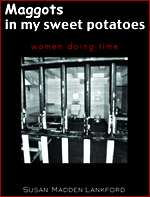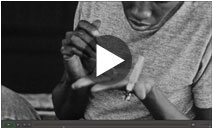 Picture an inmate at the end of his sentence. The barred gates of the jail open up, and he steps out into the fresh air of freedom. Let’s assume this is an inmate who has been wholeheartedly reformed, kicked his bad habits, and has a determined attitude about rebuilding his life.
Picture an inmate at the end of his sentence. The barred gates of the jail open up, and he steps out into the fresh air of freedom. Let’s assume this is an inmate who has been wholeheartedly reformed, kicked his bad habits, and has a determined attitude about rebuilding his life.
Then the bill comes. Not the rent or the bill for utilities, but a bill for the legal fees incurred, plus fines. Suddenly, that inmate ends up back in prison through no fault of his own except for lack of resources.
This is the picture presented by Charlene Muhammad of the New America Media as she examines the new findings presented by the ACLU:
After a year long investigation into the assessment and collection of fees associated with criminal sentences in Louisiana, Michigan, Ohio, Georgia, and Washington, the ACLU reported in ‘In for a Penny: The Rise of America’s New Debtors’ Prisons,’ that courts across the U.S. were profiting from debtors’ prisons by violating a Supreme Court decision ordering courts to investigate a person’s inability to pay before returning them to prison.
Since the poor and the minorities are disproportionately represented in the average jail population, this raises a number of disturbing issues. Since Muhammad’s article is quite long (and is highly recommended, by the way), we’re going to focus on one of the people she has interviewed, Geri Silva.
Silva is the director of Families to Amend California’s Three Strikes Law, and she raises many valid points. For on thing, in a country where right to counsel is axiomatic, the idea of making everyone pay the fees and fines irrespective of their financial means is ridiculous. That right to counsel exists to protect those who have no means:
[Silva] said the irony is that states are jailing people in ‘cash-strapped’ cities for failing to pay their legal fines, but turn around and pay triple or quadruple that amount to put people in jail.
‘It sort of leads one to believe that perhaps jails and prisons are money making enterprises for the states. All roads lead to prison and all thinking leads to the fact that if they’re filling these prisons, it’s not about public safety obviously but it has to have something to do with financial gain for the industry itself,’ Ms. Silva said.
[Silva] reiterated ‘In For a Penny’s’ position that men and women who are re-entering into society from prison already face tough obstacles. They have to try to rebuild their lives with reduced or no incomes, worsening credit ratings, poor housing prospects, and greater chances of recidivism.
Think back to the hypothetical inmate: Will he make it out of the jail with that same attitude after this, or will it kill the idea that he can be a productive member of society? After all, he’d played by the rules, and through no fault of his own ended up in prison again. How would you feel?
Muhammad writes,
‘How far will they go? Who are they trying to kid with this? How do you get blood out of a turnip? How does somebody who can’t pay, pay? Will they then find the one person who had their nails done or something instead of paying? Is that what they’re going to do to justify this insanity,’ Ms. Silva asked.
According to Ms. Silva, all of these issues that hang over a poor person who has been incarcerated stems from America’s building an industry that is skewed, sinister, uncivilized, and centered on punishment. Ask taxpayers if they would rather pay $600 in legal fees or thousands in jail costs and they would pick the more sensible route of less costs, she said.
Which brings us back to one of our recurring themes: It’s More Expensive to Do Nothing. Once more, the imbalance between taxpayer expenditure for jail costs is staggering compared to the cost of defraying these fees. As taxpayers, we would love to know that our taxes are not only being deployed to an effective program, but also that they are being reduced due to that program’s efficacy. It is, as they say, a no-brainer.
Consider the massive amount of cash it takes to run a jail or prison. Think about the cost of everything, from guards to food to laundry, but also about the number of staff needed to ensure a smooth operation of the facility.
Let’s close with one more remark from Silva:
‘The industry itself is tremendous. Can you imagine what it takes to run, say, California State Prisons in terms of food services, clothing, armaments, initially the building trades? It’s a multi-billion dollar industry that a great number of people are getting fat off of so it’s so disingenuous for them to say they’re losing money because people aren’t paying their fees,’ Ms. Silva added.
Should we be paying for this, or should we demand fiscal responsibility and a new approach?
Source: “Report: Modern-Day Debtors’ Prisons Devastating the Poor,” New America Media, 10/20/10
Image by Kevin Dooley, used under its Creative Commons license.
Visit Us on Facebook: Humane Exposures Publishing, downTownUSA, Maggots in My Sweet Potatoes, It’s More Expensive To Do Nothing.

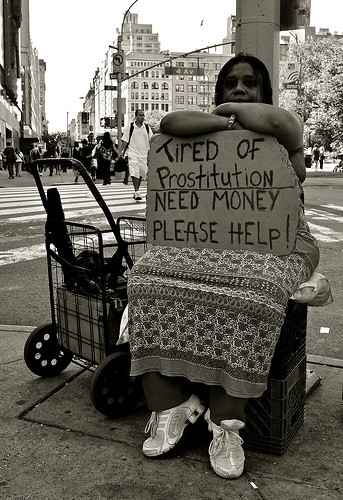 The people behind the Poverty Insights website have been following the New York Department of Homeless Services study of the city’s homeless services programs. The Department is under fire for performing a
The people behind the Poverty Insights website have been following the New York Department of Homeless Services study of the city’s homeless services programs. The Department is under fire for performing a 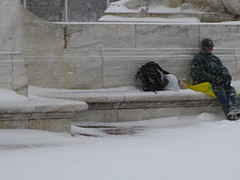 Winter is coming, and that is a bad time to be without shelter. The further north you go the harsher the climate, and thus the harder it is to survive unsheltered. Think about it when you run from your front door to your car, from island of heat to island of heat. Now think about that moment in the cold and stretch it out to days, weeks, months. For many, especially the very young and the very old, it can be the last season they will ever see.
Winter is coming, and that is a bad time to be without shelter. The further north you go the harsher the climate, and thus the harder it is to survive unsheltered. Think about it when you run from your front door to your car, from island of heat to island of heat. Now think about that moment in the cold and stretch it out to days, weeks, months. For many, especially the very young and the very old, it can be the last season they will ever see. It is a fact of the modern, media-driven mentality that celebrities attract a lot of attention. This is frequently leveraged, where possible, to attract attention to causes of various sorts. Back in my home town of New Orleans, Brad Pitt is the resident champion of sustainable housing. Jerry Lewis has his famous telethon; Oprah consistently casts her spotlight on social issues, and so on.
It is a fact of the modern, media-driven mentality that celebrities attract a lot of attention. This is frequently leveraged, where possible, to attract attention to causes of various sorts. Back in my home town of New Orleans, Brad Pitt is the resident champion of sustainable housing. Jerry Lewis has his famous telethon; Oprah consistently casts her spotlight on social issues, and so on. It is no secret that there is a link between education and one’s eventual path in life. Nowhere is this more painfully asserted than by the number of dropouts that end up in jail or prison. In Alabama, the officials have taken notice, and are using a short documentary film to communicate the “stay in school and out of prison” message to the students. Rick Harmon, a reporter for
It is no secret that there is a link between education and one’s eventual path in life. Nowhere is this more painfully asserted than by the number of dropouts that end up in jail or prison. In Alabama, the officials have taken notice, and are using a short documentary film to communicate the “stay in school and out of prison” message to the students. Rick Harmon, a reporter for  A report card that examines the treatment of mothers and pregnant women in prison has been issued recently, and several states are none too happy about the grades they’ve received. (California scored a cumulative “C-” in case you are curious.)
A report card that examines the treatment of mothers and pregnant women in prison has been issued recently, and several states are none too happy about the grades they’ve received. (California scored a cumulative “C-” in case you are curious.) Picture an inmate at the end of his sentence. The barred gates of the jail open up, and he steps out into the fresh air of freedom. Let’s assume this is an inmate who has been wholeheartedly reformed, kicked his bad habits, and has a determined attitude about rebuilding his life.
Picture an inmate at the end of his sentence. The barred gates of the jail open up, and he steps out into the fresh air of freedom. Let’s assume this is an inmate who has been wholeheartedly reformed, kicked his bad habits, and has a determined attitude about rebuilding his life. Judge Michael Tynan’s fourth-floor courtroom in downtown L.A.’s Criminal Courts building is in our spotlight today. It’s a room that’s usually packed with people that are often discarded by society: the addicts, the mentally ill or disadvantaged, the homeless, and, more recently, the female parolees.
Judge Michael Tynan’s fourth-floor courtroom in downtown L.A.’s Criminal Courts building is in our spotlight today. It’s a room that’s usually packed with people that are often discarded by society: the addicts, the mentally ill or disadvantaged, the homeless, and, more recently, the female parolees.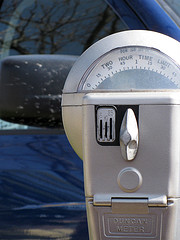 Orlando, Florida, is preparing to experiment with a new way of raising funds to help the homeless. Taking a novel stance, the city is getting ready to install a number of parking meters downtown, the funds from which are to be dedicated to the issues of the homeless.
Orlando, Florida, is preparing to experiment with a new way of raising funds to help the homeless. Taking a novel stance, the city is getting ready to install a number of parking meters downtown, the funds from which are to be dedicated to the issues of the homeless.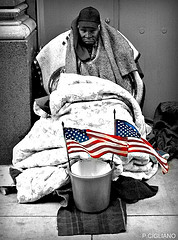 San Diego’s yearly Stand Down event just passed recently, hosted by one of the oldest and most well-known programs to help homeless veterans. In case you’re not familiar with it,
San Diego’s yearly Stand Down event just passed recently, hosted by one of the oldest and most well-known programs to help homeless veterans. In case you’re not familiar with it, 




